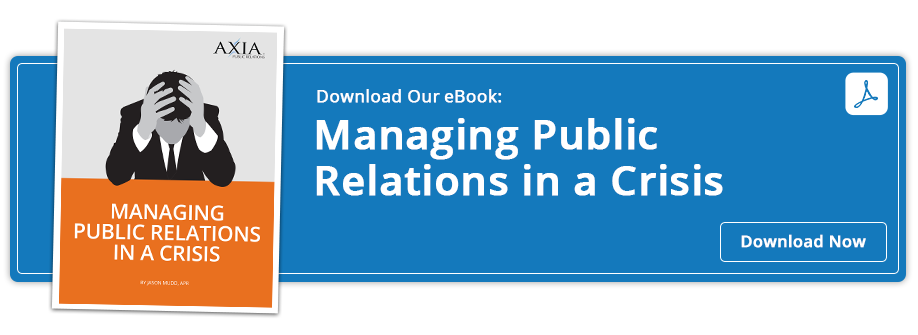 Before a crisis hits your company, use PR to get your plan ready
Before a crisis hits your company, use PR to get your plan ready
If a hurricane or tornado were coming toward your area, you would probably know exactly what to do. You would board up the windows, gather your family and maybe discuss your escape route. However, do you know what to do if a potential disaster hits your business?
A crisis can be as devastating for your company as severe weather is on a town. As with the damage from a major storm, some don’t make it; some eventually crawl out from under the rubble; and others make it through relatively unscathed. With help from PR and a comprehensive crisis plan, your company can prepare for and increase your chances for surviving a business disaster.
The importance of a crisis plan
Studies have shown that almost half of all companies that experience a major crisis do not survive it. Preparation is your best defense.
When a crisis hits, you won’t have time to figure out your plan in the middle of it. Your employees will be unsure of what to do, reporters will be calling and customers will need reassurance. To protect your reputation and profitability, you need to be able to hit the ground running.
A plan that you can refer to immediately will put everyone more at ease. It will also help you make more effective decisions even when there is chaos all around you.
Creating your plan
Having a crisis plan in place will not always prevent a crisis from happening, but it can help to minimize the damage and better equip you to manage it. While there’s no such thing as a one-size-fits-all solution, there are several key components that should be part of any plan.
1. A list of your crisis communication team members
This will typically include your CEO, vice president(s), PR and communication managers, a legal representative, risk management director and chief financial officer. Don’t make the group too big; otherwise you might get bogged down in committee. The list should have everyone’s contact information, information for replacement personnel in the case of anyone’s absence and each person’s role. For example, it should note who is responsible for communicating with staff and who takes over if that person is on vacation or indisposed.
2. Media policies
Establish your policies regarding who can speak to the media or public on your company’s behalf. Communicate this company-wide so that when calls come in, front-line staff will know how to direct them.
3. Communication protocols
How you get your messages out can be as crucial as what you say. The news media is great for distributing your information to the public as a whole. However, you may wish to contact other groups more directly or personally, such as board members and employees. Do this with owned media tools such as your website, company publications and social media platforms.
4. Spokespeople
Your current spokesperson might be fine when giving a speech or delivering information about your latest financial gains, but addressing media and the public during a crisis is much different. They may be relentless, demanding and perhaps even hostile. It’s up to your spokespeople to keep their cool, no matter what. Whomever you choose should be professionally trained. PR can get your spokesperson ready to handle any question or situation.
Why a good PR firm is vital
Creating a crisis communications plan can be time-consuming and labor-intensive. By leaving the task in the hands of a trusted PR firm, your staff can better focus on everyday goals and objectives.
At Axia, we can develop a plan that is customized to fit your unique mission and strategic plan. Contact us today or download our Managing Public Relations in a Crisis e-book to find out how we can help you deal with a crisis and protect your brand.
Lisa Goldsberry is a writer for Axia Public Relations with more than 15 years of public relations experience. She specializes in business, higher education and technology PR. Connect with Axia Public Relations on Twitter @axiapr.
Featured image credit: 123rf.com
Topics: public relations, crisis communications



Comment on This Article